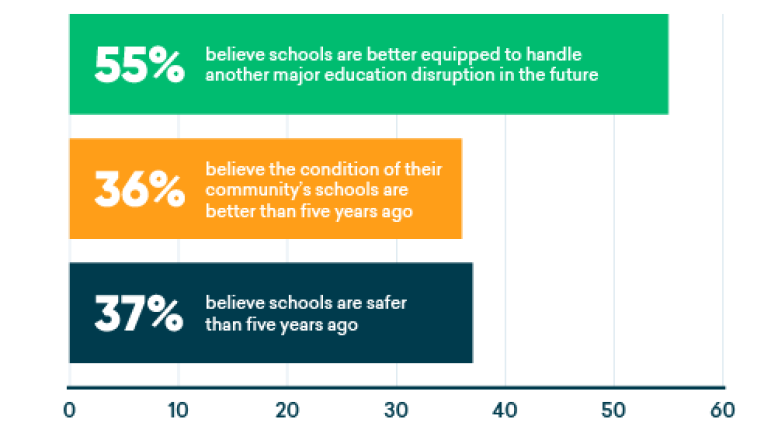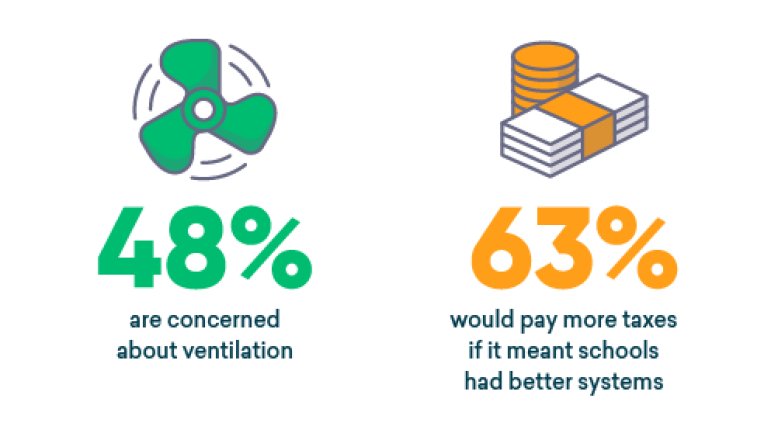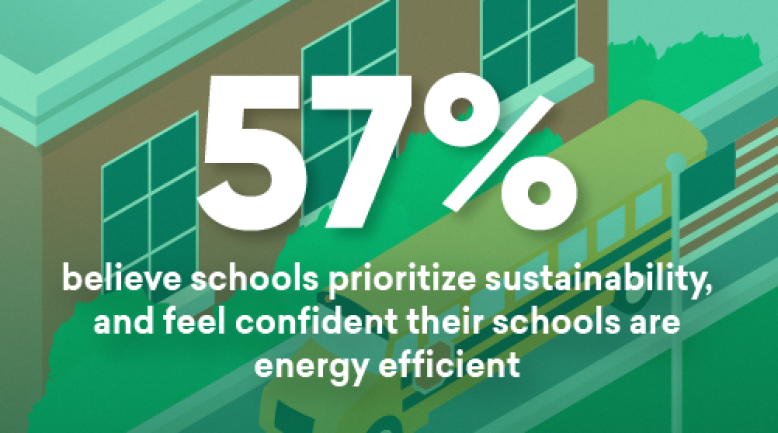New Study: Bringing Students Back with Confidence in School Preparedness
A new Dude Solutions study reveals that Americans feel positive about their community school’s resources and ability to manage disruptions – but this view doesn’t extend to infrastructure. How can we support educational institutions to make schools safer?
The 2021 Infrastructure Report Card from the American Society of Civil Engineers (ASCE) gave our schools and educational institutions a D- grade.
While school facilities represent the second-largest sector of public infrastructure spending behind highways, funding for schools has been slashed by $20 billion since 2008. Schools continue to receive less public funding while also dealing with increasing disruption.
In June 2021, Dude Solutions released part 1 of our American consumer survey on consumer perspectives on local infrastructure. In part 2 of this series, we polled consumers across the U.S. to dive into people’s views of America’s schools. The study found that Americans have a positive outlook of how schools are equipped to manage future disruption, but the data highlights concern on school infrastructure and the need for technology investments.
Key Findings

Result
- While 55% believe schools are better equipped to handle another major education disruption in the future, only 36% of people believe the condition of their community’s schools are better, and 37% believe schools are safer, than five years ago.
People’s confidence levels vary among individual systems within schools: 60% feel confident schools are updated and maintained, but 56% are concerned about overall building conditions, 50% are concerned about elevator maintenance and 33% weren’t confident about the condition of HVAC and air conditioning in schools.

Result
- 48% percent of people are concerned about ventilation and 63% would pay more taxes if it meant schools had better systems.
While ventilation systems weren’t part of the conversation around school safety 2 years ago, the pandemic has made ventilation and HVAC a key consideration in the health and safety of our nation’s students. As the conversation around the return to in-person education continues, we’ll likely see ventilation become an even bigger part of this conversation.

Result
- 57% believe schools prioritize sustainability and 57% feel confident their schools are energy efficient.
After facing the hottest June in the U.S. on record, record-breaking fire destruction in July and eight billion-dollar weather disasters in the first six months of this year alone, sustainability is seen as an increasing public priority. While the majority of Americans believe their schools are operating in sustainable, energy efficient ways, there are additional opportunities for schools to capitalize on small, quick wins to maximize energy efficiency with forethought and planning.
What’s next?
Educational institutions, including K-12, private institutions and colleges and universities, have an opportunity to capitalize on the positive outlook from the public, especially as Americans see technology as the top priority in improving community schools. As educational institutions prepare for the incoming stimulus, strategic asset management (SAM) can help leadership create plans to optimize available resources.
This includes upcoming funding reserved for schools and to combat climate change – to solve short-term needs, like improving ventilation systems and investing in HVAC upgrades, and plan funds for the future to improve building conditions and other pieces of school infrastructure. These projects must be conducted all while showing community members where the stimulus funds are being applied.
Learn more about how Dude Solutions supports schools to improve performance and better serve students, faculty, staff and the community.
Methodology: The American Infrastructure Consumer Study: Government polled more than 1,000 general US-based consumers over 18 years of age through the Dynata platform.



